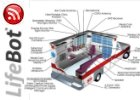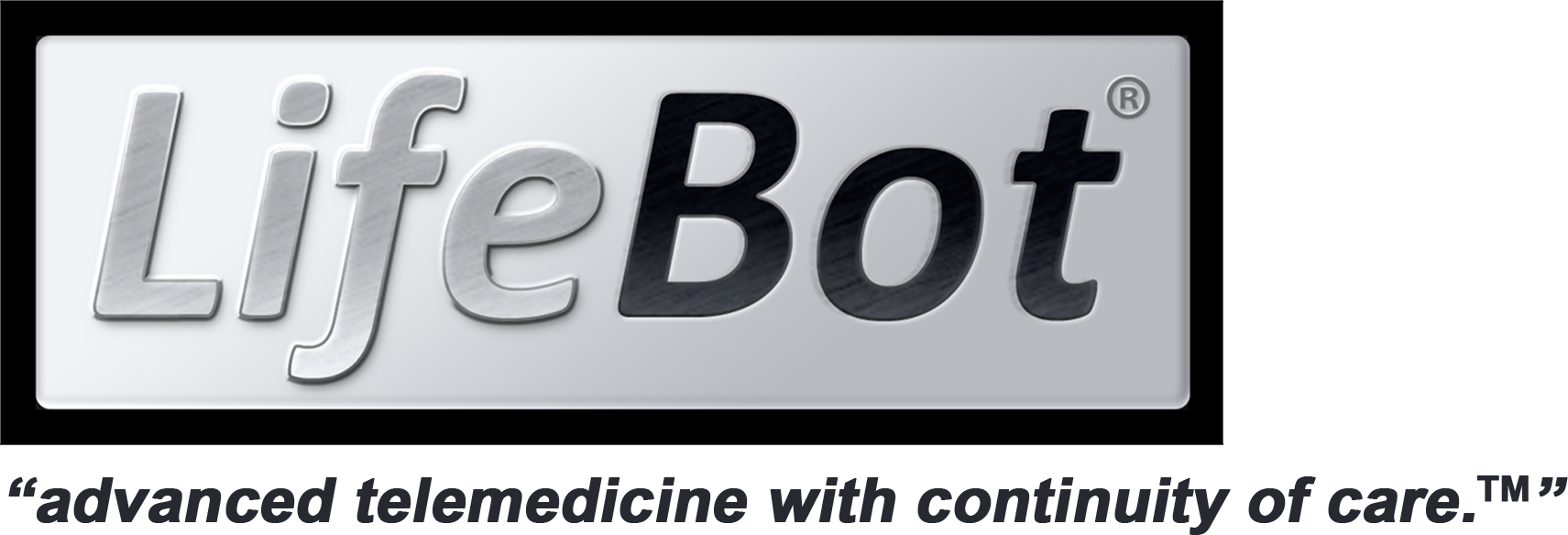 LifeBot® announced today it has exercised its Option Agreement securing the exclusive worldwide licensing rights to DREAMS™ Digital EMS, the $14 million advanced EMS ambulance and hospital telemedicine system developed by Texas A&M University, Texas Engineering Experiment Station, UTHealth, and the U.S. Department of the Army.
LifeBot® announced today it has exercised its Option Agreement securing the exclusive worldwide licensing rights to DREAMS™ Digital EMS, the $14 million advanced EMS ambulance and hospital telemedicine system developed by Texas A&M University, Texas Engineering Experiment Station, UTHealth, and the U.S. Department of the Army.
Phoenix, AZ, USA August 17, 2011 : LifeBot, LLC acted today to secure its leading technology position in emergency telemedicine systems. Considered by many to be the most highly developed ambulance to hospital EMS telemedicine system ever deployed, DREAMS™ Digital EMS is the first and only system to provide interactive simultaneous “live” transmissions of critical patient data, audio, and video. The system, in essence, brings hospital specialists to the scene giving to doctors and nurses a virtual tele-presence to collaborate in saving lives and managing disasters in real time, on the “battlefield”, at home or abroad.
Not Just a Concept : Proven in Use for Over Six Years:
The DREAMS™ Digital EMS system is the most highly developed field tested and proven emergency telemedicine system in the world. Developed with over $14 million in funding from the Telemedicine and Technology Research Center (TATRC) an office of the U.S. Army Medical Research and Materiel Command, the Digital Ambulance System has been deployed in actual use for over six years in five prototype ambulances in Liberty County, Texas.
The project was headed by renowned surgeon, James “Red” Duke, Jr. who utilized the system to triage and treat victims in New Orleans “live” during Hurricanes Katrina from the Memorial Hermann emergency room in the Texas Medical Center in Houston. DREAMS family products were also used to support remote clinics during the Katrina and Rita disasters.
Both Dr. Duke, and former Assistant Secretary of Defense (Health Affairs) Dr. S. Ward Cassells, received the distinguished General Maxwell R. Thurman Award, presented at the American Telemedicine Association, for participation in the design of these advanced telemedicine systems.
“Most attempts at ambulance based telemedicine systems have had extremely limited success, but DREAMS™ has actually delivered on its promise to get the job done and over a number of years.” says LifeBot CEO, R. Lee Heath, who is also best known as the inventor making possible the Automatic External Defibrillator (AED), recommended for the Lemelson MIT Prize by American Heart Association officials and others.
The “Super Ambulance™” System utilizes multiple remote controlled cameras to provide hospital based emergency specialists invaluable live intelligence, emergency preparedness or “situational awareness” so prompt, objective, and safe life-saving assessments and treatments may be made. The hospital knows more precisely “what”s coming in the door” and can accurately prepare the appropriate assets accordingly to both reduce costs and loss of life.
The patient’s physiologic vital signs, data, and medical record reporting (EHR or e-PCR) are updated dynamically between the hospital and the scene. The system is especially valuable for treatment of cardiac, trauma, stroke victims and is important in remote areas where transport times may be prolonged. And, the system may actually act to protect ambulance personal and providers during sensitive difficult situations. It may enhance critical decisions during disasters and mass casualty events. DREAMS™ Digital EMS can make the difference in saving thousands of lives, reducing medical errors and their associated risks further lowering costs.
Not Just for the Ambulance, but Hospitals too:
The DREAMS™ system is not solely for use in ambulances, but also for tele-cardiology, tele-stroke, intensive care (e-ICU tele-ICU) and many additional hospital-to-hospital and physician-to-hospital applications as well. LifeBot mobile telemedicine cart and desktop systems will also utilize the DREAMS™ Digital EMS system as well.
The Most Advanced Telemedicine Tablet Solution:
LifeBot has signed a Joint Marketing Agreement with Hewlett Packard. The DREAMS™ Digital EMS solution has been tested on the 1.5 pound portable Slate Tablet PC as well. This means intensivists, cardiologists, neurologists, trauma and emergency disaster specialists can login and achieve tele-presence from almost any location and at any time to save lives.
Additional Solutions for Telemedicine:
Other major technology projects for LifeBot are included in the licensing signed today. “The DREAMS™ Digital EMS system is really a family of solutions”, according to CEO Heath, “and this makes this technology licensing even more exciting.” This includes a stand-alone system called a Deployable Telemedicine System (DTS). This may be used by hospitals to expand their facilities during disasters or dropped into the battlefield to deliver telemedicine as well.
Included is the Back-Pack Telemedicine System, in which battlefield, mobile or tactical medics can actually wear telemedicine systems to save lives in remote or difficult to access locations. It is ideal for medics using motorcycles, ATVs, bicycles, mountain rescue, and helicopter transport, for example. Ultimately, it may even be used by private and municipal providers to deliver telemedicine into homes and businesses to save lives. “When you combine these with our LifeBot patented technologies”, Heath said, “it sets the stage for a roll-out of multiple critical solutions that will only be available from LifeBot.”
Care Coordination and Telemedicine Hubs:
If the ultimate objective is to lower healthcare costs, provide for efficiencies of care, and elevate the quality of care, then LifeBot can accomplish all of these things too. Important is prioritization of patient”s needs and connecting the right medical expertise or using care coordination. This becomes the central “the name of the game”. To accomplish this LifeBot now has the experience and solutions to build full call centers or telemedicine hubs, at the dispatch, hospital, or battlefield levels.
These centers can use LifeBot triage solutions and telemedicine to intelligently coordinate and safely determine if patient needs are emergent, non-emergent; send ambulances to “real” emergencies and match the needed medical expertise into each particular situation. This is absolutely key to both lowering healthcare provider costs and responding with comprehensive disaster management. This may also fulfill the objectives of the Mobile Healthcare Project of the International Association of Fire Chiefs by providing for “treat and release” and reimbursement for non-emergent calls which may rescue financially distressed Fire and EMS services.
“We will be making more announcements soon as this roll-out of these solutions unfolds.”, said Heath.
[hr]
About DREAMS™: The DREAMS™ (Disaster Relief and Emergency Medical Services) digital emergency medical services (Digital EMS) program is led by famed trauma surgeon and educator, Dr. James H. “Red” Duke, Jr. Dr. Duke is professor of surgery, holder of the John B. Holmes Professorship and chief of surgery at the University of Texas Health Science Center at Houston (UTHealth), as well as medical director of Memorial Hermann Life Flight.
The software, hardware, and telecommunications aspects of this program are led by Texas A&M University Researcher Larry Flournoy, and Texas Engineering Experiment Station researcher James Wall, Ph.D. The digital EMS program has developed and deployed wireless video communications and combining AVL/GPS (Automatic Vehicle Location/Global Positioning System) technology and advanced software to enable ambulances and helicopters to reach the victim sooner, begin triage, diagnosis and treatment on the scene, and coordinate helicopters and ambulances to minimize transport time to the nearest appropriate facility, using continuous “live” communication with these facilities.
DREAMS™ Digital EMS has already been successfully deployed and tested aboard “Super Ambulances™” in multiple counties of Texas. In addition, these “Super Ambulances™” also have aided with rescue efforts during the aftermath of the Hurricanes Katrina and Rita. DREAMS™ is a tested and proven “battlefield” application.
The development of this system was in conjunction with U.S. Army Medical Research and Materiel Command (USAMRMC) through its Telemedicine & Advanced Technology Research Center (TATRC). TATRC performs medical reconnaissance and special operations to address critical gaps that are underrepresented in DoD medical research programs. Versions of DREAMS™ also include field and disaster deployable versions that may be dropped into combat theaters and a HMMWV 9978A2 (Humvee) prototype for in-the-field use by the U.S. Military.
About LifeBot®: LifeBot provides exclusive patented and military developed telemedicine solutions for emergency management of hospital-to-ambulance and hospital-to-home communications. These systems are used to send and receive live video, voice and patient vital-sign data transmissions primarily in support of heart, trauma and stroke victims in ambulances. The company’s patents focus on extension of these life-saving systems into consumer use in the home and business.
The company was founded by R. Lee Heath, who is best known as the inventor businessman making possible the life-saving Automatic External Heart Defibrillator (AED) now in common use throughout the world. Mr. Heath was recommended for the Lemelson MIT Prize by American Heart Association officials and other peers. His experience spans almost four decades in the design and deployment of emergency life-support and their communications systems.
